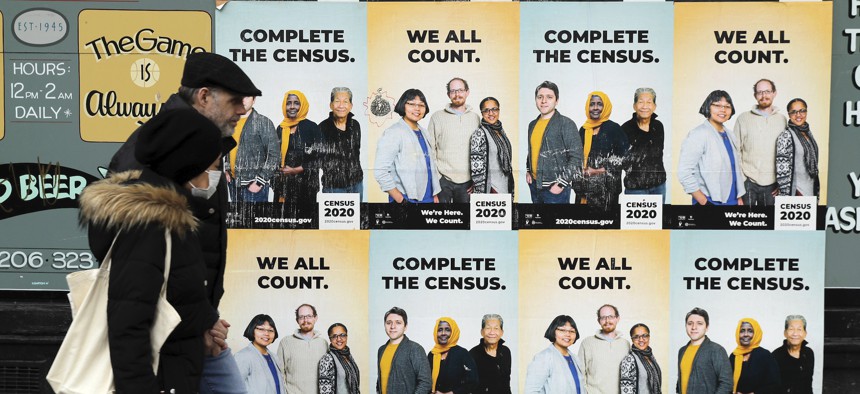
Posters encourage census participation in Seattle. New census figures show Washington state saw the biggest increase in diversity of any state. Ted S. Warren/AP file photo
This story was originally posted by Stateline, an initiative of the Pew Charitable Trusts.
Every state grew more diverse in the last decade, according to new census data released Thursday.
Almost every state saw its largest changes come from both a decrease in the White non-Hispanic population and an increase in residents who chose the “some other race” category, a catch-all for people who don’t see themselves in other census race categories.
It was the first time in American history that the White non-Hispanic population shrank, by about 5 million people or 2.6%.
Also, as predicted by a Stateline analysis of U.S. Census Bureau estimates, the nation’s growth was concentrated in cities and suburbs, with rural areas shrinking overall, census officials said.
While census officials said the reported increase in diversity came, to a small degree, from the new ways census questions asked people about their race, it mostly reflected real changes in the nation’s population.
Only the District of Columbia saw its White population increase, a consequence of rapid gentrification during the decade. The biggest shift was in Washington state, where the White population share dropped 9 percentage points, from 73% to 64%. There were similar shifts in Massachusetts (76% to 68%), Nevada (54% to 46%), Connecticut (71% to 63%) and Oklahoma (69% to 61%).
The largest increases in population growth came in the “some other race” category for most states. In North Dakota, Black residents increased from 2% to 4% of the population, the largest increase of any minority group there.
For this analysis, Stateline used the most inclusive definition of race categories, including people who chose that category alone and those who chose it in combination with other race and Hispanic categories.
In a Thursday news conference, Nicholas Jones, the Census Bureau’s director of race and ethnic research, said asking more detailed questions—including text fields for more specific categories such as “Mexican” and “Middle Eastern”—produced “a more accurate answer” to questions than in previous decades.
It’s possible some people chose “some other race” because they wanted to see additional categories that were considered but not included for 2020, such as a Middle Eastern/North African category. Hispanic people with mixed heritage also may not have identified with the standard race definitions.






